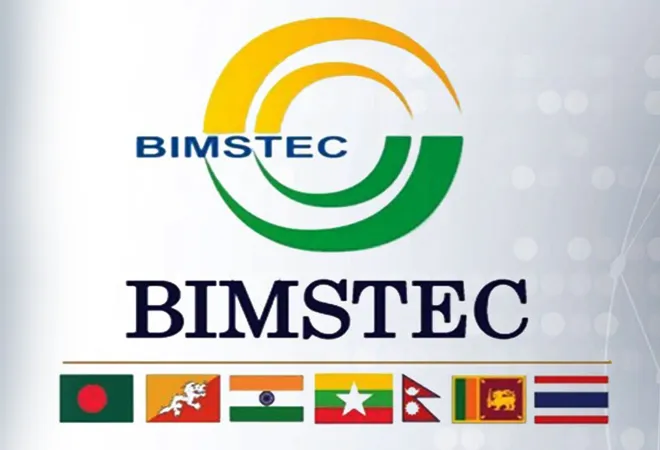
Multilateralism is dead. Long live multilateralism.
While the efficacy of multilateral cooperation is often questioned amidst the compelling forces of matchpolitik (the politics of force) and weltpolitik (global power politics), the world simply does not yet have any other alternative to structured cooperation. This is vindicated by the fact that the nature of multilateral engagement has evolved over time to accommodate geopolitical imperatives and multination platforms which allow for collective decision-making and action on common challenges.
Among the many regional organisations in the Global South, the BIMSTEC is a platform which offers an excellent template for understanding the complexities of engagement among countries which are at different stages of political and economic maturity, and with compound domestic challenges. Much like the progress and relevance of multilateral cooperation, the fate of BIMSTEC too needs to contextualised in a world order that demands action and resolve.
The BIMSTEC has indeed shown intent in recent years with member nations taking the first steps since the organisation’s inception towards according the latter agency, mobility, and funds.
Streamlining BIMSTEC
Much has been written about how the BIMSTEC has gained renewed interest in the last few years. But a multilateral grouping formed in 1997, held its fifth-ever summit last year in March 2022. On the one hand, the geographical limits of BIMSTEC suffer from poor intra-regional connectivity which is fundamental to enhancing economic engagement; on the other, the grouping itself is beleaguered by the lack of an institutional structure, operational blueprint, and financial resources.
Nevertheless, the BIMSTEC has indeed shown intent in recent years with member nations taking the first steps since the organisation’s inception towards according the latter agency, mobility, and funds. These include the adoption of a charter that accords the grouping a legal status; a reduction in the number of priority areas from 14 to seven pillars—thereby allowing for more focused engagement, pledging of funds to the operational budget to ensure actionable policy measures can be undertaken, enabling improved coordination among the seven member countries, and the signing of memorandums on technology transfer, diplomatic training and a master plan on connectivity—all of which are of import to the grouping’s future as aspirational countries in a region that has already become the gravitational centre of global geopolitics.
The ‘renewed interest’ after remaining dormant for over two decades is attributed to the economic and political stability and growth that member states (barring Myanmar) have witnessed together with the world’s interest being directed towards the opportunities and Indo-Pacific and an increasingly hostile China. As a regional organisation, the BIMSTEC is, on paper, well-positioned to gear shared efforts towards the harnessing of economic, natural, and labour potential of member nations.
To mitigate this challenge, smaller and more focused undertakings began in recent years in the form of minilateral engagement to enable smaller, and more ‘like-minded’ nations to band together for function-based cooperation.
The imperatives of multilateral cooperation
It has been argued that value-based or ethical imperatives have a better chance of strengthening multilateral cooperation. However, ethical imperatives are not constants—they are circumstantial in a world still governed by the rules of realpolitik. This is not to negate the significance of ethical imperatives or the need for emancipatory politics but simply to underscore that 21st-century global affairs cannot be categorised into neat boxes but is rather illustrative of complex interactions driven in large part by considerations of national and economic interest while being peppered with engagement formats and goals directed towards common, global solutions. These complex interactions are in turn reflective of the composite nature of challenges that the world faces today.
An assessment of multilateralism has to, therefore, move away from binary understandings of world architectures. They are in essence, hybrid affairs, combining universal aspirations such as human rights with a more prosaic system of managed competition. This format is here to stay. Because multilateral organisations help as facilitators of regional objectives by pooling the strengths of members for advancement, as lobbying entities for regional aspirations and demands on the global stage—functions which form the core purpose of these groupings. But multilateralism also suffers from its own set of drawbacks.
Perhaps the biggest limitations of multilateral engagement are ineffectiveness and becoming unwieldy—as they comprise several member countries—in terms of certain types of decision-making, particularly, those which are political. This is particularly true of large regional or global organisations, with ASEAN being the exception that proves the rule. To mitigate this challenge, smaller and more focused undertakings began in recent years in the form of minilateral engagement to enable smaller, and more ‘like-minded’ nations to band together for function-based cooperation. In the South Asian region, an example of minilateral engagement is the BBIN sub-regional framework which has, however, because of the operational complexities, continued to struggle.
Operational challenges, institutional inertia, and funding constraints aside, another perceived shortcoming comprises narratives that reject the multilateral project in favour of hyper-national agendas with former President Trump’s America First approach commonly cited as the most recent example. While such approaches do have socio-economic and therefore, political roots, they are yet to truly threaten multilateralism since cooperation on issues which simultaneously benefit both national and regional or global agendas has not lost utility and must only be undertaken via the multilateral path.
To mitigate this challenge, smaller and more focused undertakings began in recent years in the form of minilateral engagement to enable smaller, and more ‘like-minded’ nations to band together for function-based cooperation.
Multilateral forums also allow for united articulations of challenges unique to particular regions. Among the BIMSTEC’s common challenges are irregular migration, environmental degradation, transnational crimes, terrorism and insurgencies and drug trafficking, the efforts towards the mitigation of many of which, particularly the issue of migration and climate action, need the involvement of the world’s major powers. India’s G20 presidency in 2023 offers a unique opportunity to leverage New Delhi’s enhanced position in global politics to usher support for BIMSTEC’s necessities and objectives.
In the final assessment, therefore, the success of groupings—be it large or small—rests on intent shown by members regardless of operational, financial, political or institutional constraints.
This is why when the BIMSTEC was ‘revived’ after remaining dormant for over two decades, the degree of optimism overshadowed the underlying scepticism. A grouping that comprised members from what is frequently referred to as the least integrated region in the world, without sufficient financing, and devoid of institutional structures to guide its operations, there has been much to be concerned about regarding BIMSTEC. And yet, because the grouping has demonstrated intent, so far, BIMSTEC’s promise holds more sway than its impediments.
The views expressed above belong to the author(s). ORF research and analyses now available on Telegram! Click here to access our curated content — blogs, longforms and interviews.




 PREV
PREV


